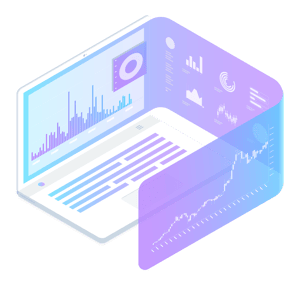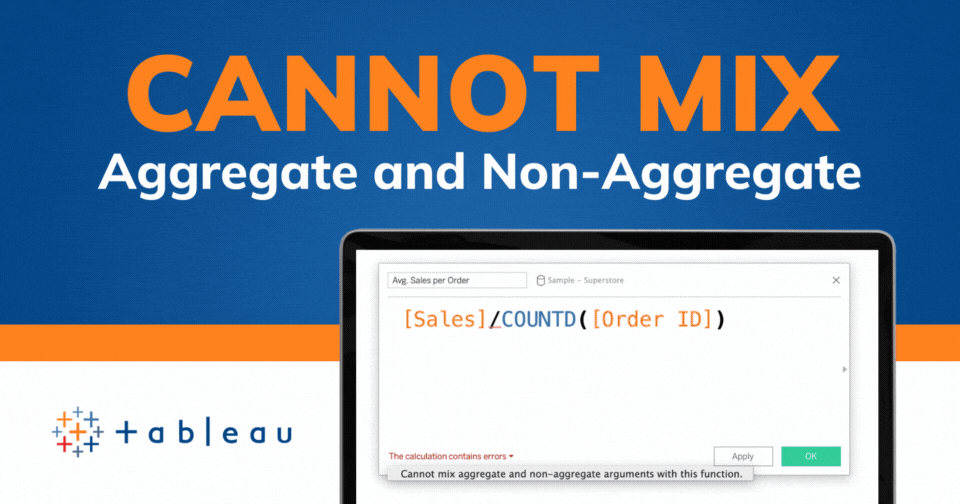Tableau Conference 2025 | Know Before You Go
If you’re a data enthusiast, analytics professional, or just someone curious about Tableau’s latest innovations, the Tableau Conference 2025 is your...
4 min read
 Luke Komiskey
Jan 6, 2023
Luke Komiskey
Jan 6, 2023
.png)
Every business, regardless of industry, needs to become data-driven in order to establish and preserve its competitive advantage. Within digital marketing agencies specifically, data is both plentiful and disparate as marketing and media decisions are made across multiple platforms.
Clients hire you to get results. They also want to know how you’re making progress toward reaching those goals. If you can’t provide them with the validation and insights they demand, it won’t be long before they start looking elsewhere. After all, there’s no shortage of digital agencies clamoring for clients in this era of global economic uncertainty.
New and existing clients alike expect their agency partners to be data-driven so that they can scale with and adapt to their constantly evolving needs. They want to know where their investment is going, and they want demonstrable evidence to prove it. They won’t be satisfied with mere promises of success, nor with claims that cannot be backed up with quality data.
That’s where effective data analytics comes in.

In the world of digital marketing and creative agencies, the number-one goal is to improve the effectiveness of clients’ campaigns. An agency’s ability to attract and retain high-value clients depends on it.
For many in the agency world, the main focus has traditionally been on performance reporting, typically in the form of spreadsheets or visual presentations. Successful agencies, however, tend to focus primarily on improving their clients’ account performance, which requires data-driven decision-making. Without that vital foundation, the reports presented to clients hold little substance.
Of course, this concerns every knowledge worker in every digital agency, including those who wouldn’t be described as holding overly technical roles. In other words, data analytics isn’t just for professional analysts or data scientists anymore. For example, account managers will often find clients asking them not only for comprehensive reports but also the hard facts and figures necessary to validate their claims. Likewise, sales and marketing teams need to know exactly what’s working and what isn’t so that they can hone in on their successes and establish and reinforce their value propositions. Finance teams want to know which clients are bringing in the most amount of revenue, as well as which ones might be costing more to retain than they generate in revenue. The list goes on.

Given just how data-heavy the digital marketing industry is, all marketing leaders are well aware of the need to become more data-driven. It’s knowing where to start that poses the biggest challenge. The sheer amount of data is enormous and ever-growing, typically doubling every two years as businesses collect more and more from a constantly expanding range of sources. Enter the era of Big Data – something that spreadsheets and manual analysis simply can’t keep up with.
To deliver a best-in-class client experience, digital agencies must make getting their data in order a number-one priority. This will allow them to monitor the metrics that matter to their clients more effectively - e.g., page rankings, bounce rates, cost-per-click, click-through rate, or anything else. However, the focus must be on improving results rather than simply reporting them.
In the typical digital agency environment, the key challenges are the quantity and disparity of data. For example, many clients will have multiple agency partners or multiple liaisons within the same agency, each handling a different segment of their sales and marketing processes. They might use one partner for managing SEO, another for SEM, and yet another for email marketing. This makes it very hard to get a holistic view of the client’s overall process, which is problematic given that all these various strategies complement each other and form part of a broader customer journey.
This makes clear the fact that big data is as also as much an opportunity as it is a challenge. Digital agencies need as much data as possible, hence the need for building a democratized data environment in which all relevant parties have the data-driven insights that matter to their roles. They also need to understand how their campaigns fit into the broader process in order to create reports that validate their efforts and responsibilities.

The goal of improving client experience can be further broken down into several objectives, all of which can be addressed with a unified approach to data analytics. Here’s what you need to do to become more data-driven and, in doing so, deliver greater value to your clients:
By leveraging data analytics to address these fundamental objectives, agencies can turn one-off projects into lasting partnerships. With data integration and automation, ideally delivered in the form of a scalable and adaptable managed service, you can save time and resources by moving away from manual processes and benefit from more relevant insights.
To achieve this, you need a platform that enables you to collect and harmonize data from the broadest possible range of sources. Doing so will allow you to create a single source of truth (SSoT) for campaign performance, often buried in applications like Google Ads, LinkedIn marketing, and media-buying platforms like FreeWheel's Strata platform. Once you’ve overcome this hurdle, you’ll be able to track performance across channels to determine what works best for your clients and where there are areas for improvement.
With full visibility into the broader process, digital agencies can even reveal new opportunities in areas like upselling or cross-selling. For example, let’s say you manage your client’s social media campaigns. In this case, you might have an excellent click-through rate, but your client isn’t getting any real return on investment due to a poor conversion rate. This might be down to factors previously beyond your control, such as a lack of compelling website content or poor usability. By pinpointing such issues in the broader campaign, you can make a strong case for clients to invest in additional services, such as website performance optimization and content marketing. Indeed, that’s why many clients are attracted to full-service digital agencies. At the same time, you need to be able to convince them that the investment is worthwhile, and the only way to do that is with a complete data set.
By leveraging smarter data management, analytics, and automation, you’ll have more time to focus on analyzing said data and using it to deliver more value to your clients. In an industry where the competition is often fierce and unforgiving, that’s an advantage that’s too important to ignore.
We combine our end-to-end Analytics Accelerator platform with domain-specific expertise to help you realize the full potential of your data. Get in touch today to start your new data journey.
-2.gif)
If you’re a data enthusiast, analytics professional, or just someone curious about Tableau’s latest innovations, the Tableau Conference 2025 is your...

Tableau Plus is the new premium offering from Tableau, a leading data visualization and business intelligence platform. It builds upon the...

If you've spent any time working with Tableau, you've likely encountered the dreaded "Cannot Mix Aggregate and Non-Aggregate Arguments" error. It's a...